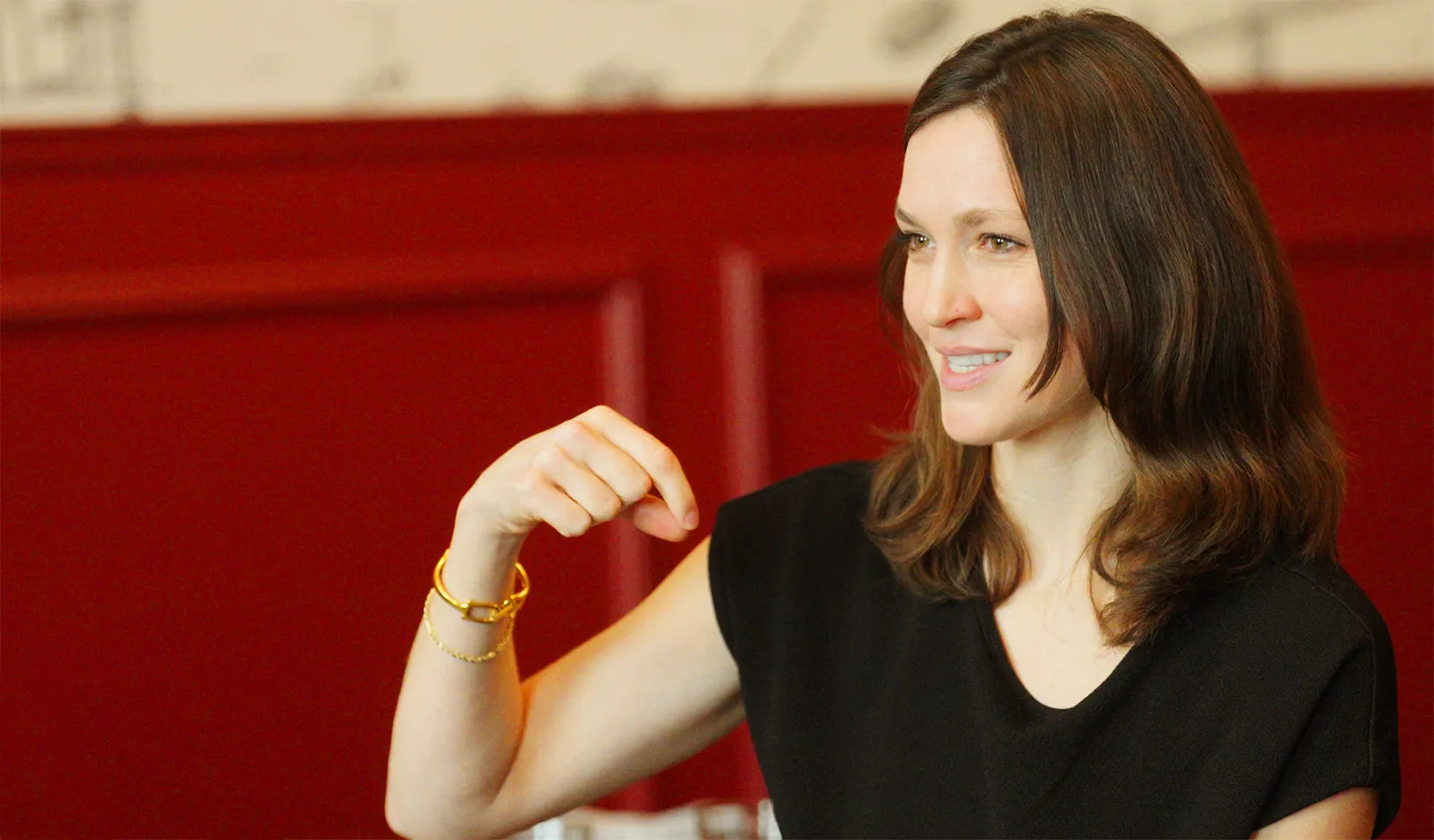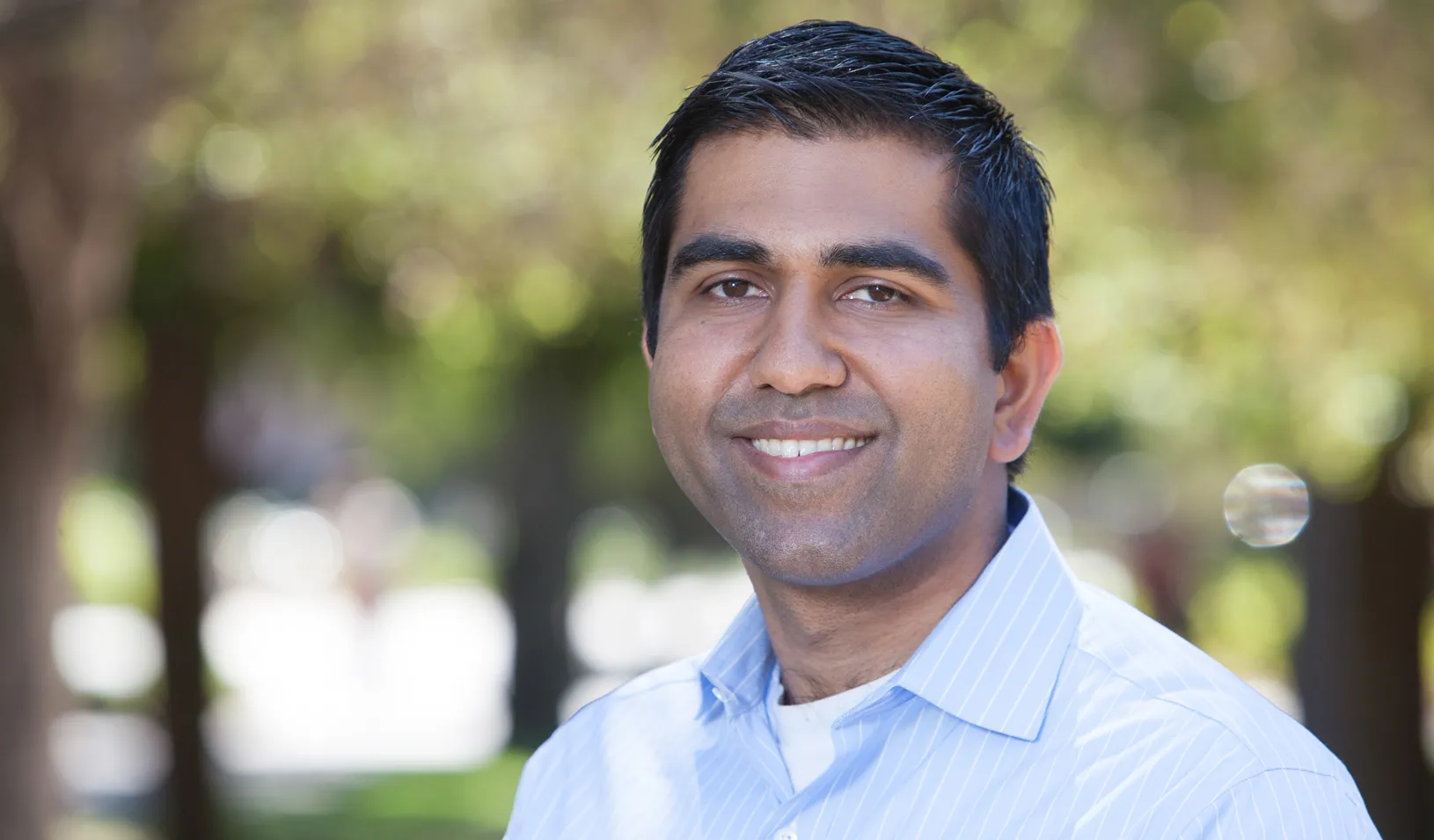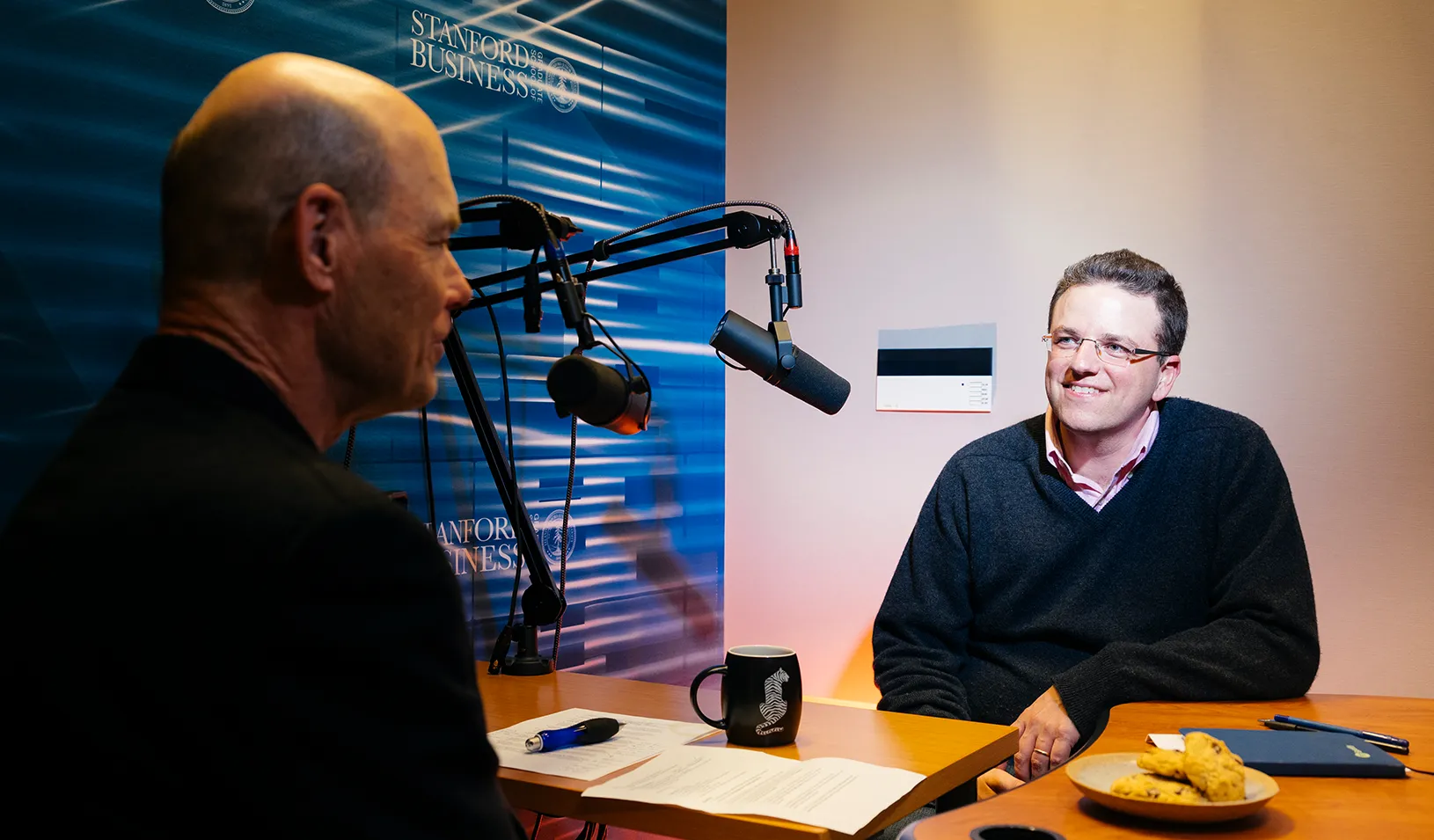Abdulhamid Haidar, MBA ’21: A Math Chatbot Bridges the Digital Divide
Social Innovation Fellow aims to address the learning crisis for students with little or no internet access.
January 28, 2022

Abdulhamid Haidar | Javier Flores
When COVID-19 hit in the spring of 2020, MBA student Abdulhamid Haidar’s classes transitioned to Zoom, but he quickly started thinking about the students back home in Syria who didn’t have access to the same tools. With spring break plans cancelled, he had unexpected time to tinker with a budding idea: to build an interactive chatbot that could support education in low-resource settings.
“The digital divide was at the top of my mind, as I had recently returned from a trip to Syria where internet access was a challenge,” he says. “I knew from my work across the Middle East that internet and technology access was limited for many — and COVID made that a catastrophic problem.”
Haidar had studied computer science, mathematics, and economics as an undergraduate at MIT. He started his career by working on economic development and public policy issues at McKinsey, where he had planned to return after completing his MBA. But as the pandemic disrupted education worldwide, with students in low-income countries increasingly isolated from learning opportunities, Haidar’s priorities shifted.
The weeks he spent experimenting resulted in the forerunner of the venture he eventually founded. Darsel, a nonprofit, in less than two years has partnered with schools in Jordan, Thailand, and Egypt to deliver math education to low-income students. Darsel’s reliance on popular low-bandwidth messaging channels, like Facebook Messenger, allow it to reach far more students than traditional education technology solutions.
“I felt I had landed on a solution that could actually make a massive dent in global education,” Haidar says. “The more I realized this could actually work, the more I felt a responsibility to see it through.”
The Problem, and the Novel Idea
According to a December 2021 World Bank report, “the pandemic has exacerbated the global learning crisis even more than previously feared… In low- and middle-income countries, the share of children living in Learning Poverty – already over 50 percent before the pandemic – will rise sharply, potentially up to 70 percent, as a result of the school closures and the inconsistent quality and effectiveness of remote learning.”
“Most education technology has been designed and delivered for students with a good Wi-Fi connection at home,” Haidar says. “However, only about 60% of the global population is connected to the Internet, and the service is often slow and costly. This correlates with educational outcomes, so the children who need the most support are the ones with the least access.”
Text messaging is much more accessible than video streaming. According to the Center for Global Development, in low-income countries less than 20% of households have internet access, whereas more than 70% own a phone, and messaging platforms like WhatsApp and Facebook Messenger have the advantage of requiring minimal data. “Texting is ubiquitous even in low-income households, and it struck me as an underutilized resource that could deliver the advantages of edtech to students with unreliable internet access,” says Haidar. “If you can text, I can send you a math problem, you can answer, and then I can give you tailored feedback. Essentially, that’s what Darsel does.”
Although self-motivated students can use Darsel independently, the platform is designed to act as a formal supplement to K-12 education systems. “Students can use Darsel to practice what they’re learning in school, or to prepare for an upcoming exam, or even to do their homework,” explains Haidar. “Our content is aligned to local curricula, and we work closely with teachers and schools to make sure that we’re supporting and strengthening existing institutions.”
The algorithm that powers the chatbot keeps track of students’ progress and individualizes their learning. “Our technology and approach is similar to what’s being developed by leading edtech companies. The difference is that we’re adapting it to low-bandwidth channels to maximize reach. It’s designed to identify and address learning gaps, which have been exacerbated by the pandemic,” says Haidar.
Darsel is free to use for students and teachers. For the time being, the offering is donor-supported. In time, Haidar aims to secure national partnerships in order to scale Darsel’s reach and ensure that every student has access to high-quality, curriculum-aligned content which is tailored to their linguistic and cultural environment. He says he is committed to a nonprofit model in part because he felt a for-profit model would threaten the mission and push the company away from prioritizing those most in need of this resource.
Haidar’s team now includes four full-time and two part-time employees who are focused on building out the technology platform and content bank, establishing new partnerships, and running pilot programs. In spite of the team’s rapid growth, it’s been difficult to keep up with demand, Haidar says. “The content developed by our team of math specialists and software engineers already includes tens of thousands of questions across several languages, but much more is needed to fully cover one curriculum, let alone all of them.”
The Innovator
Haidar was born into a Syrian family of educators, including four grandparents who were professors or teachers. Growing up, as the family spent summers in Syria and winters in the United Arab Emirates, education was core to the cultural identity that tied them to their homeland. “Our family has always been the educated family, not the rich family,” Haidar says.
Personalized learning, which today is fundamental to the vision of Darsel, is a family tradition for Haidar. His grandfather had established a habit of tutoring Haidar’s father during walks to school. In turn, Haidar received similar attention from his father, who taught him advanced math at a young age. This approach ultimately led Haidar to MIT, with an initial plan of pursuing a career in software engineering.
In his first year at MIT, Syria descended into civil war and changed his perspective. “It became obvious that my region’s most pressing problems were too institutional and too complex to be solved with coding skills alone,” Haidar says. “And I wanted to do something about those problems.”
Economics classes led him to the idea of systemic change, and he looked back to the Middle East for his first job out of school, with the consulting firm McKinsey. “I was taken by the idea of how smart policy can affect the lives of millions, and I wanted to understand how policy ideas were designed and implemented,” he says. Interspersed throughout his three years in consulting, Haidar volunteered for refugee education projects in Jordan and Lebanon, which kept realities in both places top of mind when he started graduate school.
In summer 2020, after his first year as an MBA student, Haidar worked on Darsel full-time, supported by Stanford Center for Entrepreneurial Studies’ Botha-Chan program. He tested Darsel with students in Nigeria that he met through Stanford’s Graduate School of Education. That fall, he returned to Harvard Kennedy School to complete his MPA in International Development and wrote his thesis about education in resource-constrained environments. That research surfaced evidence supporting Darsel’s approach from a policy perspective, building Haidar’s conviction to pursue the idea. Others were also inspired by the vision. He won Stanford’s Social Innovation Fellowship in May 2021 and has also received funding from a former GSB instructor, the tech nonprofit accelerator FastForward, Y-Combinator and others.
Since Haidar’s graduation, Darsel has completed several pilots. The last one, in Jordan, engaged two public schools in which 100 students answered over 10,000 math questions on the platform. “We’re learning a lot from our pilots, and collecting a lot of encouraging signals,” says Haidar. “The teachers like it, and some of the students are using it way more than we expected. Most of them say it’s helping them learn — and that’s what their exam results show, too.”
Darsel is preparing to expand the Jordan pilot, and Haidar is already laying the foundation for expanding to other countries and subjects. “We’re trying to solve a global problem, and we’ve received interest from around the world, but it’s also very personal. I wish I could show you the kids,” he says. “They get excited when their teachers notice their progress — and their small faces light up. That’s why I’m doing this.”
For media inquiries, visit the Newsroom.
Explore More
Changemakers: Teaching Young People a Recipe for Success in the Restaurant Industry

Stanford GSB Professor Neil Malhotra Named Carnegie Fellow

Stanford GSB Researchers Discuss the Ideas They’re Most Excited About
